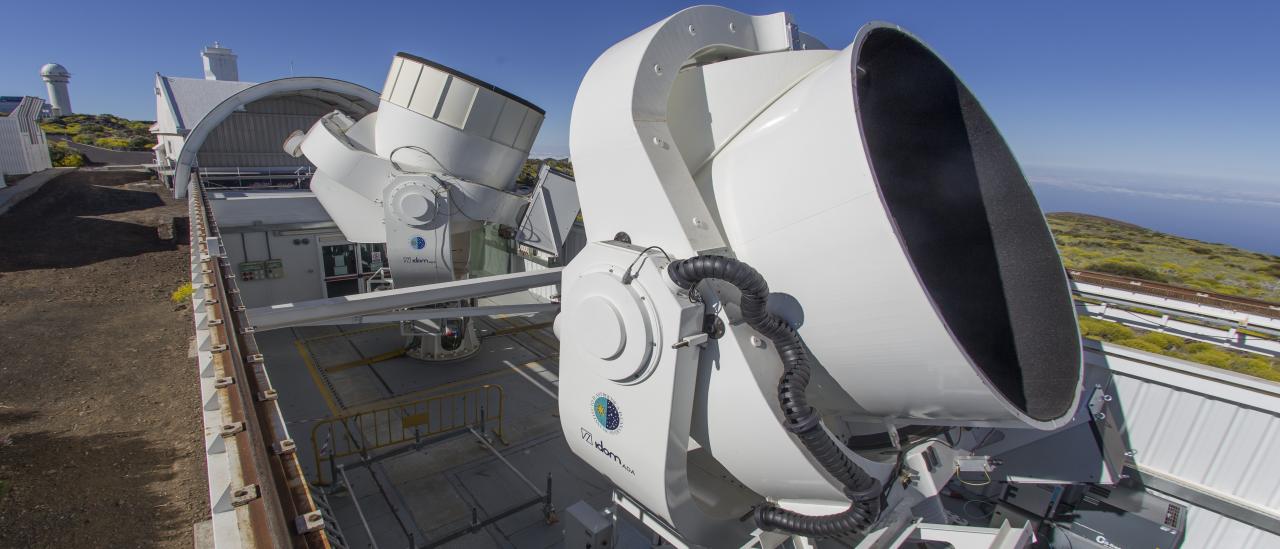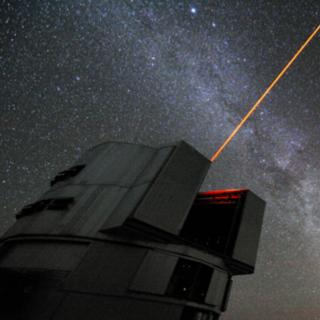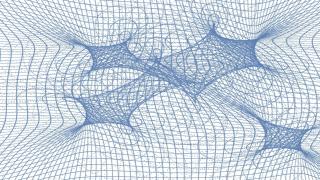Related grants:
General
El experimento QUIJOTE (Q U I JOint TEnerife) tiene como objetivo caracterizar la polarización del Fondo Cósmico de Microondas (FCM) y otros procesos de emisión Galáctica y extra-galáctica en el rango de frecuencias de 10-42 GHz, y a grandes escalas angulares (1 grado de resolución). Las medidas de QUIJOTE complementan a baja frecuencia las que ha obtenido el satélite Planck (ESA), y permiten caracterizar con precisión la polarización de la emisión sincrotrón y la emisión anómala de microondas de nuestra Galaxia.
El experimento consta de dos telescopios (QT-1 y QT-2) y tres instrumentos (MFI, TGI y FGI) que cubren 6 bandas de frecuencia. El MFI (Multi-Frequency Instrument) observa en 4 bandas (11, 13, 17 y 19GHz), y está en operación en el QT-1 desde noviembre de 2012. Los instrumentos TGI (Thirty GHz Instrument) y FGI (Forty GHz Instrument) tienen cada uno 31 receptores, a 30GHz y 42GHz respectivamente. El TGI tuvo su primera luz con 27 polarímetros en diciembre de 2016, y los primeros detectores del FGI tuvieron primera luz en 2018. En la actualidad, ambos instrumentos TGI y FGI se han integrado en un único criostato en el foco del QT-2, en una configuración mixta de 14 receptores de 30GHz, y 15 de 42GHz.
Los instrumentos TGI y FGI han sido diseñados para alcanzar la sensibilidad necesaria para detectar una componente de ondas gravitacionales primordial si ésta tuviera una razón tensorial a escalar de r=0.05. Dicha componente deja su impronta en el espectro de potencias de la polarización del FCM en forma de los denominados "modos-B". La detección de dichos modos-B abriría un camino extraordinario para esclarecer la física de la inflación. Para alcanzar los objetivos científicos, los mapas para estudios cosmológicos de QUIJOTE cubrirán un área de unos 3,000 grados cuadrados, y alcanzarán un nivel de sensibilidad de 3-4 microK por haz en 11-19GHz, y 1 microK por haz tanto a 30GHz como a 42 GHz. Además, el experimento proporciona mapas de medio cielo (20,000 deg2) que se usan para modelar la emisión de los contaminantes en radio (sincrotrón, libre-libre y emisión anómala), en el contexto del proyecto RADIOFOREGROUNDS: http://www.radioforegrounds.eu.
En paralelo, se desarrollan dos nuevos instrumentos, financiados en su mayor parte por fondos del plan de infraestructuras y equipamiento científico-técnico: un nuevo Multi-Frecuencia (MFI2), que sustituirá al actual MFI incluyendo mejores prestaciones; y el TMS (Tenerife Microwave Spectrometer), un espectrógrafo de microondas también en el rango 10-20 GHz complementario a QUIJOTE.
El proyecto QUIJOTE, liderado por el IAC, tiene como socios al Instituto de Física de Cantabria (IFCA), al Departamento de Ingeniería de Comunicaciones (DICOM), y las Universidades de Manchester y Cambridge en Reino Unido. Web de QUIJOTE: https://research.iac.es/proyecto/quijote Web de TMS: https://research.iac.es/proyecto/tms/
Members
Results
- MFI results (January 2023). Almost a decade after starting observations of the sky in the northern hemisphere, the QUIJOTE Collaboration has presented an initial series of 6 scientific articles, giving the most accurate description we have of the polarization of the emission of the Milky Way in the microwave range. This is a window of observation not previously explored, which provides complementary information to that obtained previously by space missions (Planck and WMAP) dedicated to the study of the cosmic microwave background radiation (CMB), the fossil radiation left behind by the Big Bang. The new results allow us to obtain information about the structure of the magnetic field of our Galaxy, as well as helping to understand the energetic processes that took place close to the birth of our Universe.


